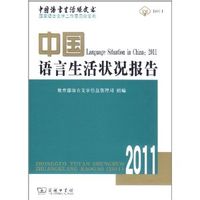Review Chinese language situation in China

The Green Paper on Language Situation in China (GPLSC) is a two-part series on contemporary Chinese language. The first part of the series focuses on iterating the normative standards of Chinese usage, while the second part of the series, which includes the report Language Situation in China: 2011, analyzes more day-to-day and pedestrian uses of Chinese.
The series is mainly aimed at furthering the establishment of Chinese for daily usage, and includes new concepts in language management and new developments in linguistics research. It will serve as a reference for policy-makers and linguistic researchers alike, as well as educators and publishers developing language education products and tools.
Compared with past reports, Language Situation in China:2011 is comprised of six chapters detailing many facets of Chinese use: Chinese in Different Domains, Special Issues, Hot Topics, Statistical Data, Chinese Used in Hong Kong, Macao and Taiwan, and a reference appendix.
Through the establishment of specialized centers and the integrated use of linguistics, sociology, ethnology, education and geography research methods, the series fully investigates and analyzes the use of Chinese language and the actual state of language resource use.
The series includes plenty of surveys, real statistics, and diagrams as well a multi-dimensional perspective, greatly enhancing its readability. Among other topics, readers can learn about the language of cross-Straits communication and international communication, the language barriers in assistance to disaster reliefs, the language use and identity for rural migrant workers, the crisis of Chinese writing, and popular discourses in media. The book not only analyzes current Chinese language phenomena but also assesses its potential development trajectory.
Mao Haoran is an associate professor in College of Foreign Languages, Fujian Normal University
The Chinese version appeared in Chinese Social Sciences Today, No.384, Nov.26, 2012
(Translated by Yang Min)
